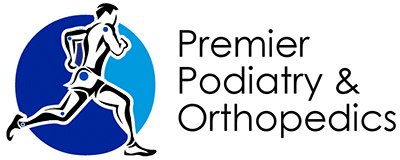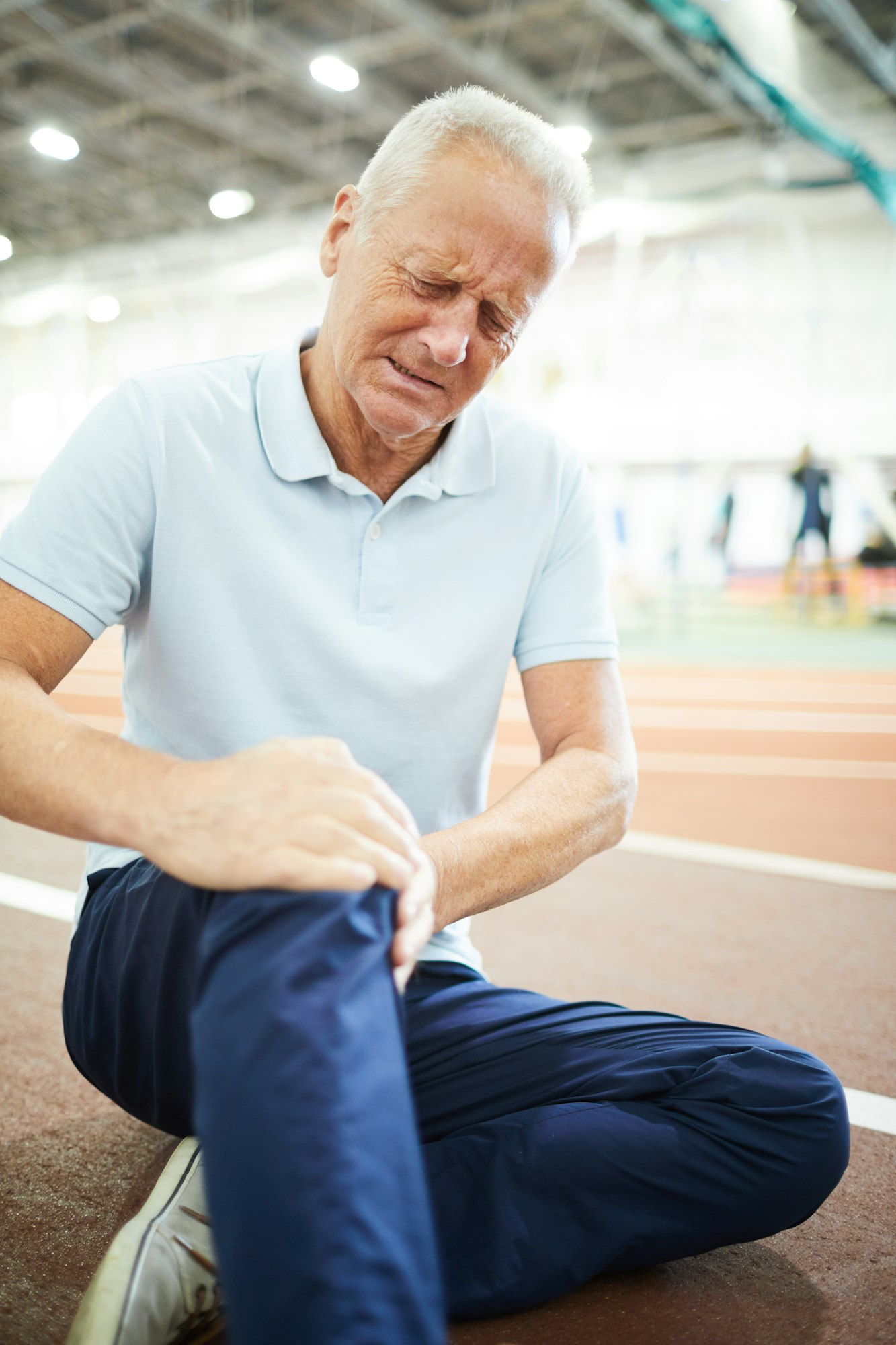Table of Contents
Introduction
Whether you play for competition, fitness, or the pure fun of it, sports injuries can happen!
No matter how intense or casual your activities may be, there is always at least some risk of getting hurt during activity. An ankle sprain, for example, can happen whether you’re playing table tennis or football.
At Premier Podiatry & Orthopedics, we have seen it all. We are equipped with the best tools, knowledge, and skills available to get you back on your feet and into the action as quickly and as safely as possible.
Common Sports Injuries We Treat
Sports injuries can happen in a variety of ways. Some can happen through a sudden, hard hit or force, while others develop more slowly through overuse and repetitive impacts.
Some of the more common injuries we treat include (but are not limited to):
- Achilles Tendinitis – Repetitive stress can aggravate the Achilles tendon, causing inflammation and pain in the back of the heel. Engaging in sudden increases in intensity, such as increasing running mileage too quickly or jumping into a “weekend warrior” event, can also cause this condition.
- Heel Pain/Plantar Fasciitis – The plantar fascia that runs beneath the foot can become aggravated and tender if it is forced to endure too much stress and overuse. Pain from this injury is most often felt when you start moving again after periods of inactivity.
- Ankle Sprains – A very common injury, an ankle sprain occurs when one or more ligaments surrounding the ankle joint become overstrained, often by a strong twisting force. Sprains do varying degrees of damage and can lead to complications if they do not heal properly.
- Fractures – There is more than one type of fracture, from the standard “simple fracture” that breaks completely through a bone, to stress fractures that form hairline cracks across a bone’s surface.
- Turf Toe – This sprain of the big toe joint happens when the toe is planted but the rest of the foot continues moving forward. It is often seen in football players, but can also happen with dancers.

Children’s Sports Injuries
Children are not immune from the same kinds of foot and ankle sports injuries that can be suffered by adults. And they can also experience sports injuries that are more specific to their development.
One common example is Sever’s disease. This is not a communicable disease as its name might suggest, but rather a heel pain condition often seen in active children around the ages of 8-14.
During this time of development, the heel is forming new bone at the “growth plate” along the back of the heel. Stress during this period – either from the repetitive impacts of running or a tight Achilles tendon pulling on the heel – can cause pain and inflammation.
It is important to watch for signs of pain and other problems in active children, as they might not want to express their problems due to fear of treatment or letting others down. Any sports injury should be evaluated and addressed promptly to avoid further complications.
Treating Sports Injuries
The key to a better outcome for any sports injury is never ignoring pain and other symptoms – it’s your body’s way of telling you something is wrong. Always stop an activity if you suspect a sports injury and do not try to “walk it off.”
In most cases, injuries left untreated will only become worse or cause more severe problems later. Always have severe or persistent symptoms professionally assessed to determine the causes and an appropriate treatment plan.
If you suspect the injury to be minor, RICE therapy will often help with pain and inflammation during the first 48 hours. RICE stands for:
- REST – Keep weight off the affected foot or ankle.
- ICE – Apply a cold pack to the area for 15-20 minutes at a time, using a thin towel to avoid direct contact with the skin.
- COMPRESS – Wrap the injury with an elastic bandage to help reduce swelling (making sure to loosen if you feel more swelling or pain).
- ELEVATE – Keep the injury above the level of your heart when sitting or lying down.
If the injury is severe or does not improve, call us right away for advice and/or an evaluation.
For most sports injuries, conservative treatment will be an effective means of providing relief and aiding recovery. Our goal will always be to get you back to activity as swiftly as possible without increasing your risk of further injury. A conservative treatment plan might include:
- Further rest, with an exercise plan that does not place excess stress on vulnerable areas
- Anti-inflammatory medications or injections
- Changes to footwear and workout plans
- The use of custom orthotics to shift excess stress away from an injured area
- Laser therapy to aid natural pain relief and accelerated recovery
In cases where conservative treatments do not work or clearly would not, surgery may be considered as an option to provide necessary relief. We will fully discuss such options with you if necessary.

Take Steps to Reduce Your Risks of Sports Injury
Even better than treating sports injuries after they happen is preventing them from occurring in the first place. While it is impossible to reduce your risk to 0%, every measure that increases your safety is well worth taking.
- Advice to consider:
- Warm up prior to activity and never jump into an event without training.
- Perform a few minutes of stretching before and after activity (dynamic stretching before, static stretching after).
- Increase the intensity of your workouts gradually, no more than 10% in terms of time, weight, or distance per week.
- Wear shoes properly designed for the demands of your sport or activity.
- Make sure your shoes fit well, are not worn out, and provide proper arch support.
It is also worth considering an investment in orthotics. Even if you do not have pain now, structural abnormalities in your feet can increase stress in specific areas and make them more prone to injury. Custom orthotic inserts inside your shoes can provide exact amounts of cushioning and corrective support to address these “hot spots.”
Find Expert Sports Injury Care at Premier Podiatry & Orthopedics
Young or old, pro or amateur, never push through the pain of a sports injury. If your feet or ankles hurt, stop what you’re doing and address the problem right away.
And if you’re uncertain whether you should contact us regarding your condition, always err on the side of caution! It’s always better to find out you have a minor problem at our office than to find out later that an underestimated injury will require more difficult treatment or surgery.
Schedule an appointment with our team by calling (916) 961-3434. We will always be happy to hear from you.
Testimonials
Looking to schedule an appointment with a physician?
Schedule an appointment with us by calling (916) 961-3434 or by clicking the button below to begin requesting your appointment today!



